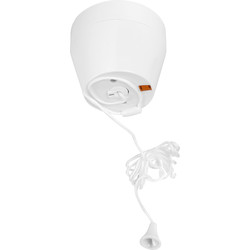- Joined
- May 21, 2009
- Messages
- 6,114
- Location
- Planet Earth
- Car
- Polo GTi (and a travel pass for the train and subway)
Bit of a weird one so I’d like to hear any input.
Daughter and future son-in-law have asked for my advice but I’m not sure so I thought best to ask here !!
The 45A double pole switch for their shower is showing signs of overloading (burnt internal connections and blistered internal)
It’s certainly wired correctly.
Wiuld I be right in surmising that the issue could be within the shower ?
Just want to get an idea before suggesting an electrician or plumber being the best choice
Daughter and future son-in-law have asked for my advice but I’m not sure so I thought best to ask here !!
The 45A double pole switch for their shower is showing signs of overloading (burnt internal connections and blistered internal)
It’s certainly wired correctly.
Wiuld I be right in surmising that the issue could be within the shower ?
Just want to get an idea before suggesting an electrician or plumber being the best choice

